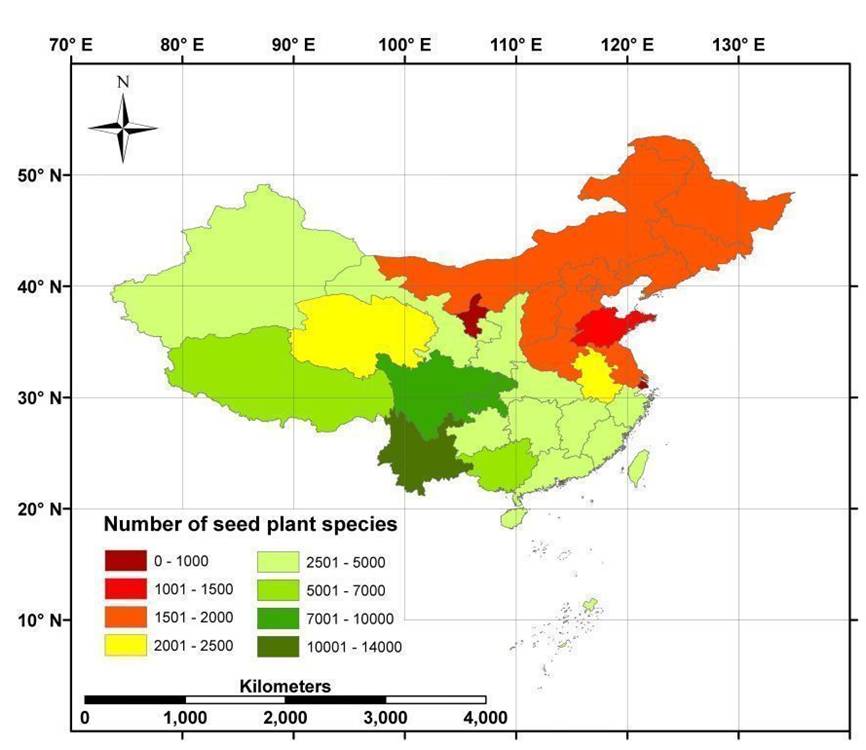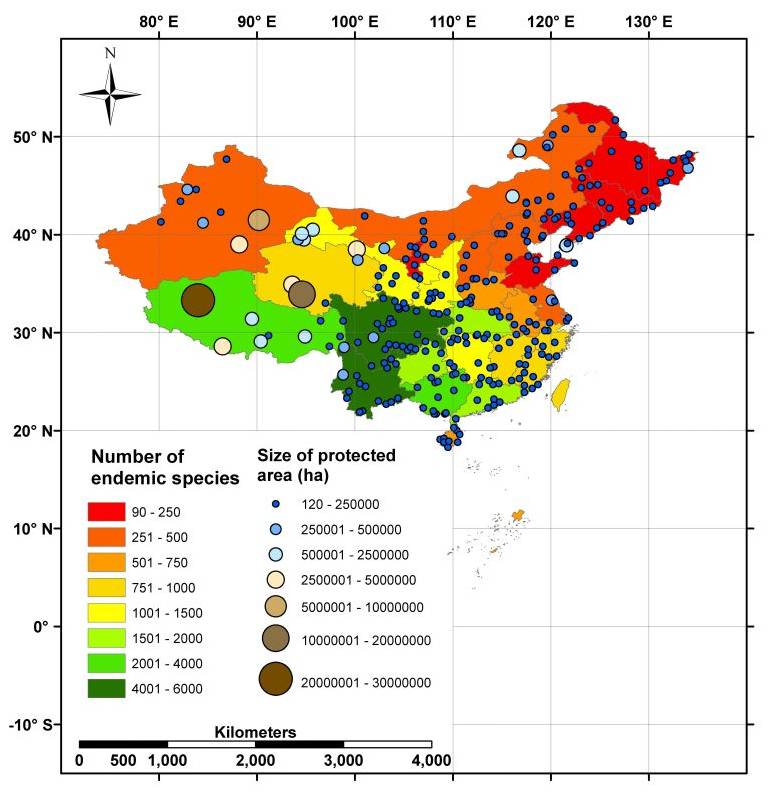China's protected areas are poorly sited and fail to adequately conserve the country's vast wealth of plant species, many of them endemic, according to an article in BioScience. The authors from Chinese Academy of Sciences propose seven measures that they say could mitigate the threats to plants resulting from the country's rapid economic development and the growth of tourism.
The article titled ‘Securing a Future for China's Wild Plant Resources’, by SANG Weiguo and MA Keping of the Institute of Botany, Chinese Academy of Sciences and Jan C. Axmacher of University College, London, who is also member of CAS’ fellowship for young international scientists, has published in the September issue of BioScience. Based on the analysis of the plant and natural reserve distributions in China (Figures. 1 and 2), the article points out China needs to adjust nature reserves sitesand steer people out of remote rural villages toward cities to protect its valuable but threatened wild plant resources. The article states further that there are seven strategic steps to secure the future of China's wild plants, which the authors say are not effectively conserved by the country's existing protected areas.
The wild plant resources protect strategy is one of the most important directions of Macro-Environmental Strategy for China. The project was initiated in 2007 by Chinese Ministry of Environmental Protection and Chinese Academy of Engineering. Owing to the accomplishments on wild plant resources preserving and nature reserves construction, the Institute of Botany was honored ‘Advanced Unit’, meanwhile, Dr. Sang and Dr. Ma were awarded’ Advanced individuals’.
In September 2011, this article was reported by the BioScience in the form of Press Release, and the report has been cited by many international websites, such as Plants 2020 and Seeddaily, etc. The achivement has also been reported by Science Times Media Group in China.
Click to see the full text of the article:http://www.plants2020.net/files/Plants2020/target_4/bioscience_61_9.pdf
Press release of Bioscience: http://www.aibs.org/bioscience-press-releases/110907_chinas_plant_resources_need_additional_protections.html

Figure 1. Number of seed plant species in China’s provinces and autonomous regions.
China's protected areas are poorly sited and fail to adequately conserve the country's vast wealth of plant species, many of them endemic, according to an article in BioScience. The authors from Chinese Academy of Sciences propose seven measures that they say could mitigate the threats to plants resulting from the country's rapid economic development and the growth of tourism.
The article titled ‘Securing a Future for China's Wild Plant Resources’, by SANG Weiguo and MA Keping of the Institute of Botany, Chinese Academy of Sciences and Jan C. Axmacher of University College, London, who is also member of CAS’ fellowship for young international scientists, has published in the September issue of BioScience. Based on the analysis of the plant and natural reserve distributions in China (Figures. 1 and 2), the article points out China needs to adjust nature reserves sitesand steer people out of remote rural villages toward cities to protect its valuable but threatened wild plant resources. The article states further that there are seven strategic steps to secure the future of China's wild plants, which the authors say are not effectively conserved by the country's existing protected areas.
The wild plant resources protect strategy is one of the most important directions of Macro-Environmental Strategy for China. The project was initiated in 2007 by Chinese Ministry of Environmental Protection and Chinese Academy of Engineering. Owing to the accomplishments on wild plant resources preserving and nature reserves construction, the Institute of Botany was honored ‘Advanced Unit’, meanwhile, Dr. Sang and Dr. Ma were awarded’ Advanced individuals’.
In September 2011, this article was reported by the BioScience in the form of Press Release, and the report has been cited by many international websites, such as Plants 2020 and Seeddaily, etc. The achivement has also been reported by Science Times Media Group in China.  |
|
Figure 1. Number of seed plant species in China’s provinces and autonomous regions. |
 |
|
Figure 2. Endemic plant species richness and distribution of state-level protected areas in China’s provinces and autonomous regions. |
